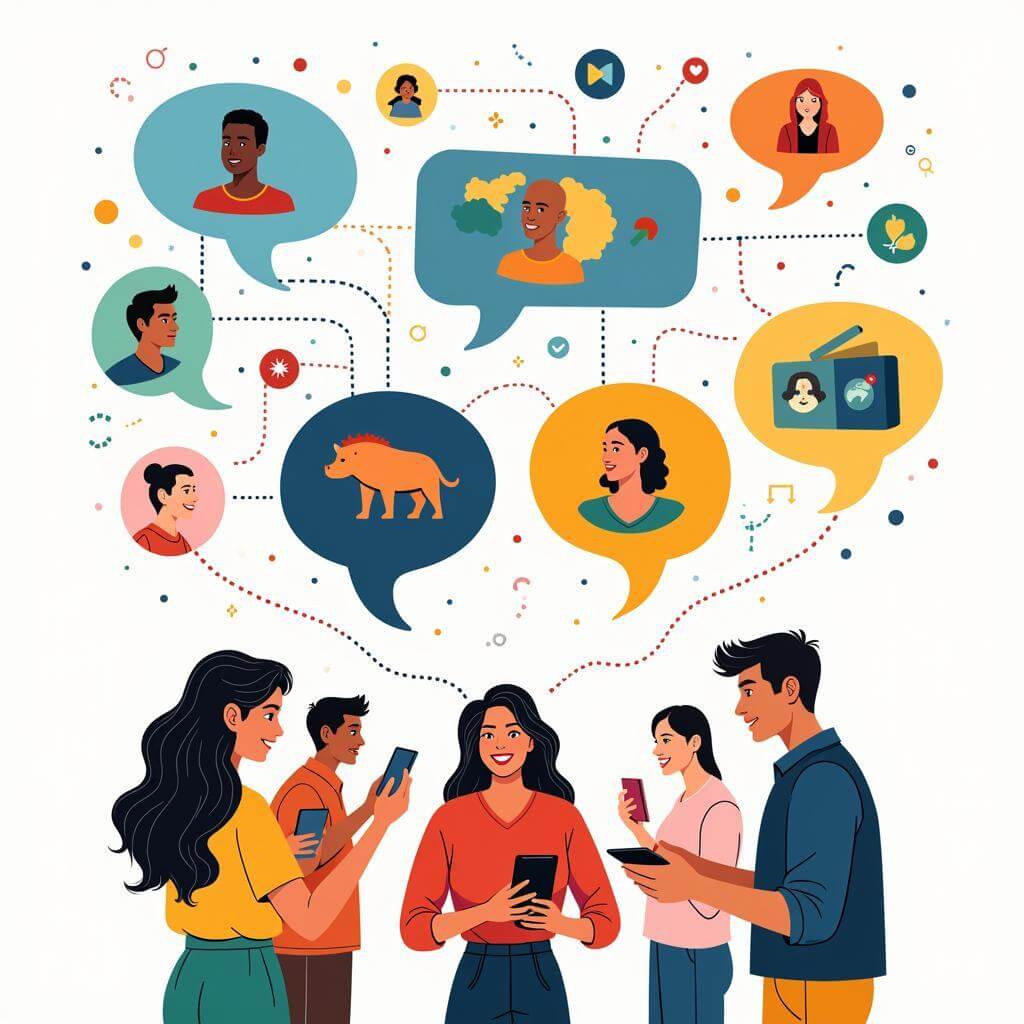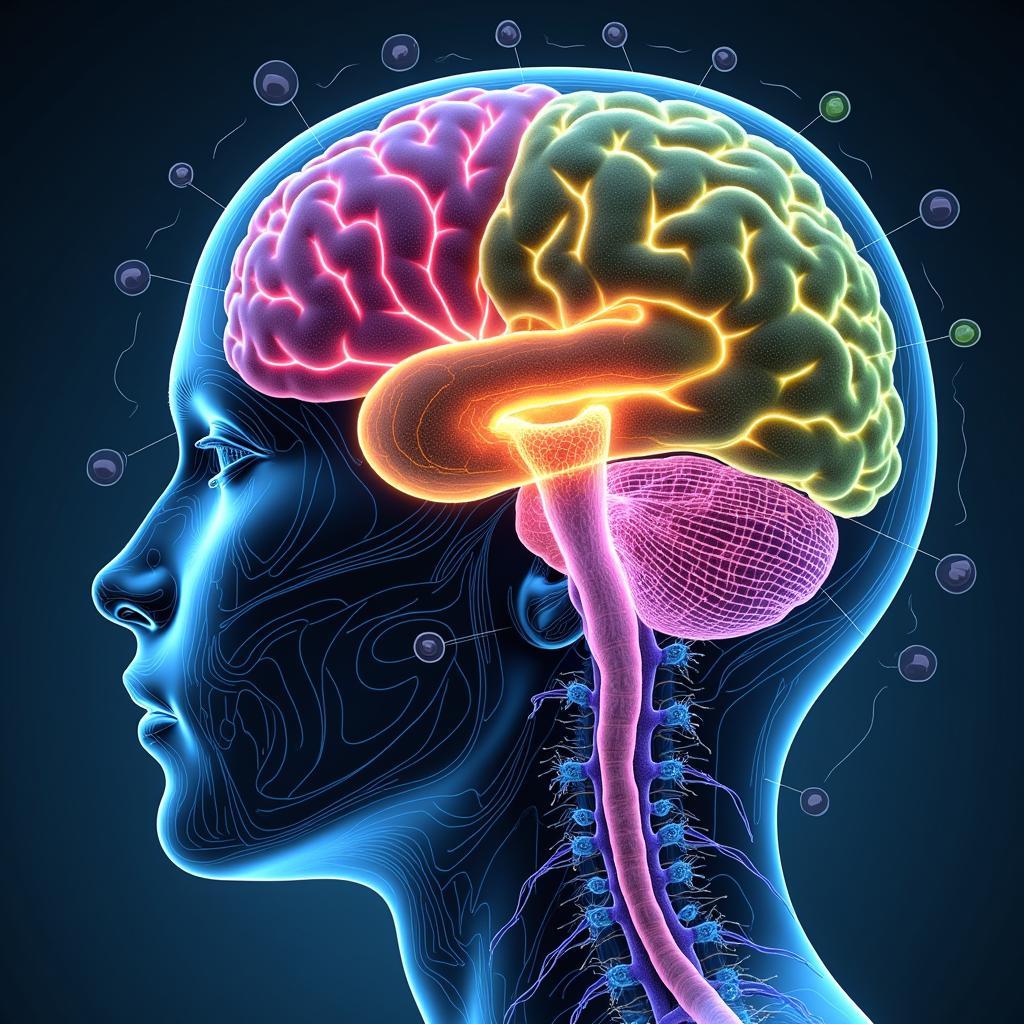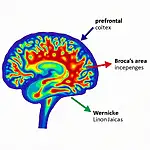In today’s interconnected world, digital storytelling has emerged as a powerful tool for promoting cross-cultural understanding. This IELTS Reading practice test explores this fascinating topic through three engaging passages of increasing difficulty. Let’s dive into the world of digital narratives and their impact on bridging cultural divides.
 Digital storytelling fostering cross-cultural understanding
Digital storytelling fostering cross-cultural understanding
Passage 1 – Easy Text
The Rise of Digital Storytelling
Digital storytelling has revolutionized the way we share and consume narratives in the 21st century. This innovative form of communication combines traditional storytelling techniques with modern digital tools, allowing individuals from diverse backgrounds to share their experiences with a global audience. By harnessing the power of multimedia elements such as images, videos, and interactive features, digital storytelling creates immersive experiences that transcend linguistic and cultural barriers.
One of the key advantages of digital storytelling is its accessibility. With the proliferation of smartphones and internet connectivity, people from all walks of life can now create and share their stories with ease. This democratization of narrative has given voice to marginalized communities and underrepresented groups, providing a platform for stories that might otherwise go unheard.
Moreover, digital storytelling platforms have become virtual meeting grounds where individuals from different cultures can interact and exchange ideas. These online spaces foster dialogue and promote empathy by allowing users to step into the shoes of others and experience their world views firsthand. As a result, digital storytelling has become an invaluable tool for promoting intercultural understanding and breaking down stereotypes.
How digital platforms promote intercultural dialogue through various features and functionalities, further enhancing the potential of digital storytelling to bridge cultural gaps.
Questions 1-5
Do the following statements agree with the information given in the passage? Write
TRUE if the statement agrees with the information
FALSE if the statement contradicts the information
NOT GIVEN if there is no information on this
- Digital storytelling combines traditional narrative techniques with modern technology.
- Digital storytelling is only accessible to people in developed countries.
- Marginalized communities have benefited from the rise of digital storytelling.
- Digital storytelling platforms are exclusively used for entertainment purposes.
- The use of digital storytelling has led to a decrease in cultural stereotypes.
Questions 6-10
Complete the sentences below. Choose NO MORE THAN TWO WORDS from the passage for each answer.
- Digital storytelling uses multimedia elements to create __ experiences.
- The widespread availability of __ has made digital storytelling more accessible.
- Digital storytelling platforms serve as virtual __ for people from different cultures.
- By using digital storytelling, users can experience different __ firsthand.
- Digital storytelling is an important tool for promoting __ understanding.
Passage 2 – Medium Text
Digital Narratives: Bridging Cultural Divides
The advent of digital storytelling has ushered in a new era of cross-cultural communication, offering unprecedented opportunities for people to share their unique perspectives and experiences with a global audience. This innovative medium has proven particularly effective in fostering empathy and understanding between diverse communities, transcending geographical and cultural boundaries that have traditionally hindered intercultural dialogue.
One of the most significant aspects of digital storytelling is its ability to preserve and revitalize indigenous knowledge and traditions. Many indigenous communities around the world have embraced digital platforms as a means of documenting and sharing their oral histories, cultural practices, and traditional wisdom. This not only helps to safeguard valuable cultural heritage but also allows younger generations to connect with their roots in a format that resonates with their digital-native sensibilities.
The role of storytelling in indigenous knowledge transfer is particularly crucial in this context, as it helps to bridge the gap between traditional and modern forms of communication.
Furthermore, digital storytelling has emerged as a powerful tool for social activism and advocacy. Marginalized groups and individuals facing discrimination or oppression can now amplify their voices and share their experiences with a wider audience. This has led to increased awareness of social issues and has catalyzed movements for change on both local and global scales.
The interactive nature of digital storytelling platforms also contributes significantly to their effectiveness in promoting cross-cultural understanding. Unlike traditional forms of media, digital stories often invite audience participation through comments, shares, and collaborative storytelling projects. This engagement fosters a sense of connection and mutual understanding between storytellers and their audience, breaking down barriers and challenging preconceived notions about different cultures.
Educational institutions have also recognized the potential of digital storytelling as a pedagogical tool for enhancing cultural competence. Many schools and universities now incorporate digital narrative projects into their curricula, encouraging students to explore and share their own cultural backgrounds while learning about others. This approach not only develops critical digital literacy skills but also nurtures empathy and global awareness among young learners.
However, it is important to acknowledge that digital storytelling is not without its challenges. Issues such as digital divide, language barriers, and cultural misinterpretation can sometimes hinder the effectiveness of cross-cultural communication through digital narratives. Additionally, the potential for misinformation and the spread of stereotypes through poorly researched or biased stories remains a concern that must be addressed through media literacy education and ethical storytelling practices.
Despite these challenges, the potential of digital storytelling to promote cross-cultural understanding remains immense. As technology continues to evolve and become more accessible, we can expect to see even more innovative ways in which digital narratives will bring people together, fostering a global community built on empathy, mutual respect, and shared human experiences.
Questions 11-15
Choose the correct letter, A, B, C, or D.
-
According to the passage, digital storytelling is particularly effective in:
A) Replacing traditional forms of communication
B) Promoting empathy between diverse communities
C) Increasing tourism in indigenous areas
D) Improving technological skills -
Indigenous communities use digital storytelling platforms primarily to:
A) Compete with modern media
B) Attract foreign investors
C) Document and share their cultural heritage
D) Learn about other cultures -
The interactive nature of digital storytelling platforms:
A) Limits the audience to tech-savvy individuals
B) Encourages audience participation and engagement
C) Reduces the quality of the stories shared
D) Makes it difficult for storytellers to control their narrative -
Educational institutions incorporate digital storytelling into their curricula to:
A) Replace traditional teaching methods
B) Reduce the cost of education
C) Prepare students for careers in digital media
D) Enhance cultural competence and digital literacy -
One of the challenges of digital storytelling mentioned in the passage is:
A) The digital divide
B) The high cost of technology
C) The lack of interest from younger generations
D) The disappearance of traditional storytelling methods
Questions 16-20
Complete the summary below. Choose NO MORE THAN TWO WORDS from the passage for each answer.
Digital storytelling has emerged as a powerful tool for promoting cross-cultural understanding. It allows people to share their (16) __ and experiences with a global audience. Indigenous communities use digital platforms to preserve their (17) __ and connect younger generations with their cultural roots. Digital storytelling is also used for (18) __ and advocacy, giving marginalized groups a platform to share their stories. The (19) __ nature of digital storytelling platforms encourages audience engagement, fostering connection and understanding. While digital storytelling faces challenges such as the digital divide and potential for (20) __, its ability to bring people together and promote empathy remains significant.
Passage 3 – Hard Text
The Neuroscience of Digital Storytelling and Cross-Cultural Empathy
The intersection of digital storytelling and cross-cultural understanding has recently captured the attention of neuroscientists, who are uncovering the profound impact these narratives have on our brains and, consequently, on our capacity for empathy and cultural sensitivity. This burgeoning field of research is shedding light on the neural mechanisms that underpin our ability to connect with others across cultural divides through the medium of digital storytelling.
At the core of this phenomenon is the concept of neural coupling, a process by which the brain activity of a storyteller and a listener synchronize during narrative comprehension. Functional magnetic resonance imaging (fMRI) studies have revealed that when individuals engage with compelling digital stories from diverse cultural backgrounds, there is a marked increase in neural coupling between the storyteller’s brain and that of the audience. This synchronization occurs primarily in regions associated with social cognition, emotion processing, and perspective-taking, such as the medial prefrontal cortex, temporoparietal junction, and anterior insula.
The implications of this neural synchrony are profound. It suggests that well-crafted digital stories have the potential to create a shared mental model between individuals from disparate cultural backgrounds, effectively bridging the gap between different worldviews and experiences. This neurological alignment may explain why digital storytelling has proven to be such a potent tool for fostering cross-cultural empathy and understanding.
Moreover, research has shown that exposure to diverse digital narratives can lead to structural and functional changes in the brain over time. Longitudinal studies have documented increased gray matter density in regions associated with empathy and social cognition among individuals who regularly engage with cross-cultural digital stories. This neuroplasticity suggests that the brain’s capacity for understanding and relating to diverse perspectives can be cultivated and enhanced through repeated exposure to multicultural narratives.
 Neural activity during digital storytelling engagement
Neural activity during digital storytelling engagement
The multisensory nature of digital storytelling also plays a crucial role in its neurological impact. Unlike traditional text-based narratives, digital stories often incorporate visual, auditory, and sometimes even tactile elements, engaging multiple sensory cortices simultaneously. This multisensory integration has been shown to enhance memory formation and emotional resonance, leading to more robust and lasting cross-cultural understanding.
Interestingly, neuroscientific research has also revealed that digital stories that challenge cultural stereotypes or present counter-narratives can activate the brain’s conflict monitoring systems, particularly the anterior cingulate cortex. This activation is associated with cognitive dissonance and can lead to a reassessment of preexisting beliefs and attitudes. When coupled with the empathetic response elicited by the narrative, this cognitive conflict can serve as a powerful catalyst for changing perceptions and reducing prejudice.
The role of mirror neurons in the processing of digital stories has also garnered significant attention. These specialized neurons, which fire both when an individual performs an action and when they observe that action being performed by others, are thought to play a crucial role in empathy and social cognition. Research suggests that engaging with digital stories activates mirror neuron systems, allowing viewers to simulate the experiences and emotions of characters from different cultural backgrounds as if they were their own.
However, it is important to note that the neurological impact of digital storytelling is not uniform across all individuals or cultures. Factors such as cultural background, prior exposure to diverse narratives, and individual differences in empathic capacity can modulate the brain’s response to cross-cultural digital stories. This variability underscores the need for a nuanced approach to creating and disseminating digital narratives that can effectively bridge cultural divides.
How digital storytelling platforms enhance cultural learning by leveraging these neurological insights to create more impactful and engaging cross-cultural experiences.
As our understanding of the neuroscience behind digital storytelling and cross-cultural empathy continues to evolve, so too does the potential for harnessing this knowledge to create more effective tools for promoting global understanding. By designing digital narratives that specifically target the neural mechanisms underlying empathy and cultural sensitivity, we may be able to cultivate a more interconnected and compassionate global society.
In conclusion, the neuroscientific exploration of digital storytelling’s impact on cross-cultural understanding has revealed the profound ways in which these narratives can shape our brains and, by extension, our capacity for empathy and cultural sensitivity. As we continue to navigate an increasingly interconnected world, the insights gained from this research may prove invaluable in fostering greater understanding and cooperation across cultural boundaries.
Questions 21-26
Complete the summary below. Choose NO MORE THAN TWO WORDS from the passage for each answer.
Neuroscientific research has revealed that digital storytelling has a significant impact on promoting cross-cultural understanding. The process of (21) __ occurs when the brain activity of a storyteller and listener synchronize during narrative comprehension. This synchronization primarily happens in brain regions associated with (22) __, emotion processing, and perspective-taking. Regular engagement with cross-cultural digital stories can lead to (23) __ in the brain, particularly in areas related to empathy. The (24) __ nature of digital storytelling engages multiple sensory cortices, enhancing memory formation and emotional resonance. Digital stories that challenge cultural stereotypes can activate the brain’s (25) __, potentially leading to a reassessment of preexisting beliefs. The activation of (26) __ allows viewers to simulate the experiences and emotions of characters from different cultural backgrounds.
Questions 27-30
Choose FOUR letters, A-H.
Which FOUR of the following statements are mentioned in the passage as factors that influence the neurological impact of digital storytelling?
A) The length of the digital story
B) The cultural background of the viewer
C) The use of subtitles in the story
D) Prior exposure to diverse narratives
E) The age of the viewer
F) Individual differences in empathic capacity
G) The educational level of the viewer
H) The language used in the story
Questions 31-35
Do the following statements agree with the information given in the passage? Write
TRUE if the statement agrees with the information
FALSE if the statement contradicts the information
NOT GIVEN if there is no information on this
- Neural coupling occurs equally in all regions of the brain during digital storytelling.
- Exposure to diverse digital narratives can lead to increased gray matter density in certain brain regions.
- Digital stories that reinforce cultural stereotypes are more effective in promoting cross-cultural understanding.
- Mirror neurons play a role in simulating the experiences of characters from different cultural backgrounds.
- The neurological impact of digital storytelling is the same for all individuals regardless of their cultural background.
Questions 36-40
Complete the sentences below. Choose NO MORE THAN THREE WORDS from the passage for each answer.
- The process of neural coupling primarily occurs in brain regions associated with __, emotion processing, and perspective-taking.
- Longitudinal studies have shown increased __ in regions associated with empathy among regular consumers of cross-cultural digital stories.
- The multisensory nature of digital storytelling engages multiple __ simultaneously.
- Digital stories that challenge cultural stereotypes can activate the brain’s __.
- Factors such as cultural background and prior exposure to diverse narratives can __ the brain’s response to cross-cultural digital stories.
Answer Key
Passage 1
- TRUE
- FALSE
- TRUE
- NOT GIVEN
- NOT GIVEN
- immersive
- smartphones
- meeting grounds
- world views
- intercultural
Passage 2
- B
- C
- B
- D
- A
- perspectives
- oral histories
- social activism
- interactive
- misinformation
Passage 3
- neural coupling
- social cognition
- structural and functional changes
- multisensory
- conflict monitoring systems
- mirror neurons
- B, D, F, H
- TRUE
- TRUE
- FALSE
- TRUE
- FALSE
- social cognition
- gray matter density
- sensory cortices
- conflict monitoring systems
- modulate
The role of storytelling in building classroom community is another fascinating aspect of digital narratives that complements the cross-cultural understanding fostered through these innovative storytelling techniques.


